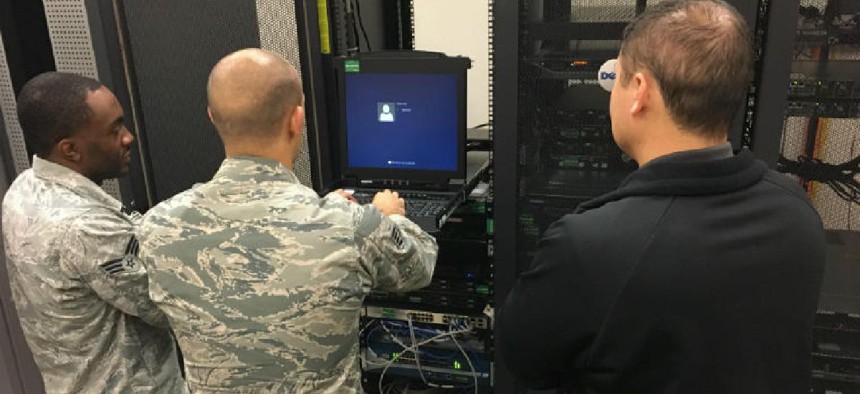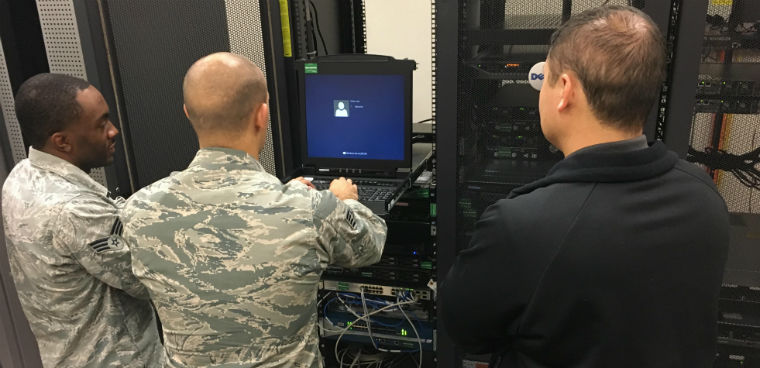Air Force to reboot JRSS migrations after connectivity problems

The Air Force hit pause on standing up and migrating to the Joint Regional Security Stacks after suffering connectivity problems but will reboot in 2019.

The Air Force will restart its migration to the Joint Regional Security Stacks (JRSS) platform after months of delay.
Rory Kinney, the Defense Department's principal director for information enterprise CIO, said "JRSS is still alive and well" during remarks at the Armed Forces Communications and Electronics Association Northern Virginia chapter's Air Force IT Day Dec. 4.
The Air Force is about 30 percent done, with 13 of 20 nodes installed, Kinney said. He added that the service is restarting migrations and that JRSS for the secret internet protocol router has been installed but not yet migrated. Migrations will continue in January, starting with the Pacific.
"The real deal for this is that we took a brief pause, if you will, to try to improve the way we handle training, the way we handle the actual stack, the way we handle processors so we can improve the deliveries," Kinney said. "Because we're having issues with the deliveries, we're actually trying to improve on that."
Kinney said there were about a million users involved and that connectivity was the "main, key element." The big push is really in the Pacific, with the intent of beginning migration again in January, he said.
"Even though we've all kind of come together as a team, we all have our own solutions and with JRSS, it's sort of come as you are," he said. "We're trying to create a solid IT [service management solution]" to help manage it as one entity.
The Air Force is also consolidating data centers and networks in the defense support agencies, also called the Fourth Estate. The consolidation effort is a pilot of sorts before extending across the DOD.
Kinney said the consolidation will include about 34 different Fourth Estate functions -- networking, computing, licensing, IT service management and anything that will move the organization to a single non-classified and classified internet protocol router (NIPR and SIPR). Data centers for the "dot EDU" organizations such as the Defense Acquisition University and Uniformed Services are being pulled aside and optimized separately.
Additionally, the reform team for the Fourth Estate network and data consolidation is transitioning to DOD CIO this week, he said. The goal is to "create an army of folks that not only look at capability delivery but also [can say], 'How do I recapitalize what I already own?'".
"The intent is to drive the Fourth Estate to a standardized solution set as a representative of the rest of the environment," Kinney said, and "to get it right in the Fourth Estate before we go to any of the other [military departments]."



